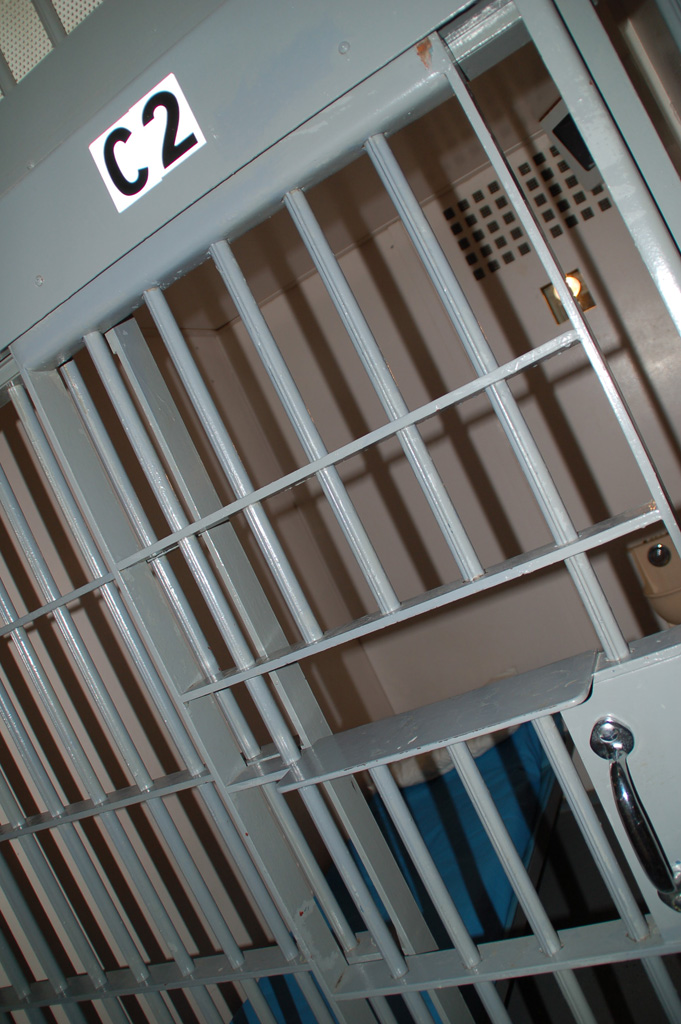
From “the land of the free” to “the world’s leading jailer”. In both raw numbers and as a percentage of population, the United States locks up more people than any other industrialized country in the world. In Oklahoma, we have the special distinction of incarcerating a larger percentage of women than any other state. Let’s forget about drugs for a minute and look at different problem, our addiction to incarceration.
“Addiction is any repeated behaviour, substance-related or not, in which a person feels compelled to persist, regardless of its negative impact on his life and the lives of others” – Dr. Gabor MatéWhy do we incarcerate? On the surface, safety appears to be a primary reason. We all want a safe society where we can live our lives and raise children in peace. If that is truly the reason, we should first ask ourselves the basic question, “how’s that working ?” In a subsequent post we’ll explore the effects of incarceration and answer that question with a resounding “not very well”.
I once heard an attorney ask a judge if she was mad at guy or scared of him. He went on to recommend that if we are truly afraid of someone, prison may be the answer – but if we’re only angry, we should consider other options. Unfortunately, we seem to have incarcerated large numbers of people that we are more angry with than afraid of.
“Nothing can be more abhorrent to democracy than to imprison a person or keep him in prison because he is unpopular. This is really the test of civilization” – Winston ChurchillPrison as Punishment
Punishment isn’t anything new. Some of the first recorded laws (The Code of Hammurabi) focused almost entirely on retribution as a consequence of criminal behavior. Those punishments were most often administered in direct relation to the violation in the spirit of “an eye for an eye, a tooth for a tooth”.
The Romans were some of the first to use jail as a form of punishment. Of course the Romans had other creative ways to handle prisoners. Dungeons are commonly associated with the Middle Ages. However, that period was probably better known for its public humiliation, torture and violent executions.
While exile was nothing new, Britain created some of the first penal colonies by shipping large numbers of prisoners to Australia and the Americas. Penal colonies are an interesting combination of punishment and incapacitation. The French got into the act by contributing to the population of Louisiana as well as several tropical locations as featured in the (great) movie Papillon.
Prison as Reform
It wasn’t until the 18th century that societies shifted toward mass incarceration as an alternative. One of the original justifications for incarceration was to reform. The term penitentiary comes from the Christian word penitent, meaning a person who repents his sins and seeks forgiveness for them.
As early as the 19th Century, terrible conditions and overcrowding led to cries to reform the treatment of prisoners. The hope was that humane treatment would help reform the prisoners themselves. Work training programs and transition to more rural settings (thought to be therapeutic) increased throughout the early 20th century.
In Oklahoma, the Department of Corrections has instituted a number of education and treatment programs to reform prisoners and reduce recidivism. Unfortunately, the increase in prisoners has outpaced the available funding for such programs and budget cuts in recent years have made the situation worse.
In 1955, the United Nations adopted the Standard Minimum Rules for the Treatment of Prisoners. One doesn’t have to look too far into the standards to recognize the United States is often in violation.
Prison as Incapacitation
Some argue that prison is effective because it “keeps them off the streets”. The argument is that if criminals are locked up, they can’t commit crimes. These beliefs led to tougher sentencing for habitual offenders, three-strikes laws and back to back life sentences for many offenders.
As a result, crime rates in the 1990’s actually dipped for a while. Unfortunately, that bullet appears to have been spent and now we’re facing rising crime rates in addition to overcrowded prisons and jails.
Prison as Deterrent
Many view the threat of prison as a deterrent to criminal behavior. Again, we have to ask how is that working? The number of people incarcerated has increased from around 200,000 in 1970 to over 2.2 million today. Are we safer than in 1970?
I read somewhere (but can’t find where) that people don’t refrain from stealing because we hang thieves, they refrain because stealing is wrong. I completely agree with that sentiment. Of course the speaker went on to say that people know stealing is wrong because we hang thieves. I couldn’t disagree more. I believe he have the capacity to understand right and wrong at a much deeper level.
Alternatives to Incarceration
So what are the alternatives? We’ll look at several in a future post including treatment and diversion programs as well as decriminalization of certain behaviors. Many states have implemented alternatives with varying levels of success and some countries have completely revolutionized their handling of the problem.
In a recent statement, the Attorney General of the United States said, “we cannot simply prosecute or incarcerate our way to becoming a safer nation”. He went on to say that “a vicious cycle of poverty, criminality and incarceration traps too many Americans and weakens too many communities. However, many aspects of our criminal justice system may actually exacerbate this problem, rather than alleviate it”.
Love or hate the current administration, there is a profound truth in that statement as well as a hope for reform in the months and years to come. For those of us who work with the adults and children affected by incarceration, the reforms can’t come too soon.



5 thoughts on “Addicted to Incarceration: Part 1”
I totally agree that the current system is not working. There needs to be some alternative programs for nonviolent crimes,
Loss of wealth, home confinement, work for state , ???. Once they
Legalize marajiana that should take care of some folks and it should be treated like alcohol.
You lose your license and have to have a breather in your car to start it.first offenders should not be sent home… This is the time to impress. Them that their lives are at risk and the decision is theirs and offer alternatives and help….. Not back to the same environment.
Comments are closed.